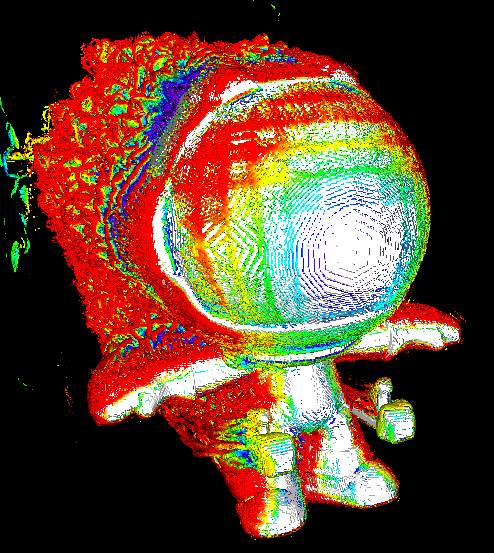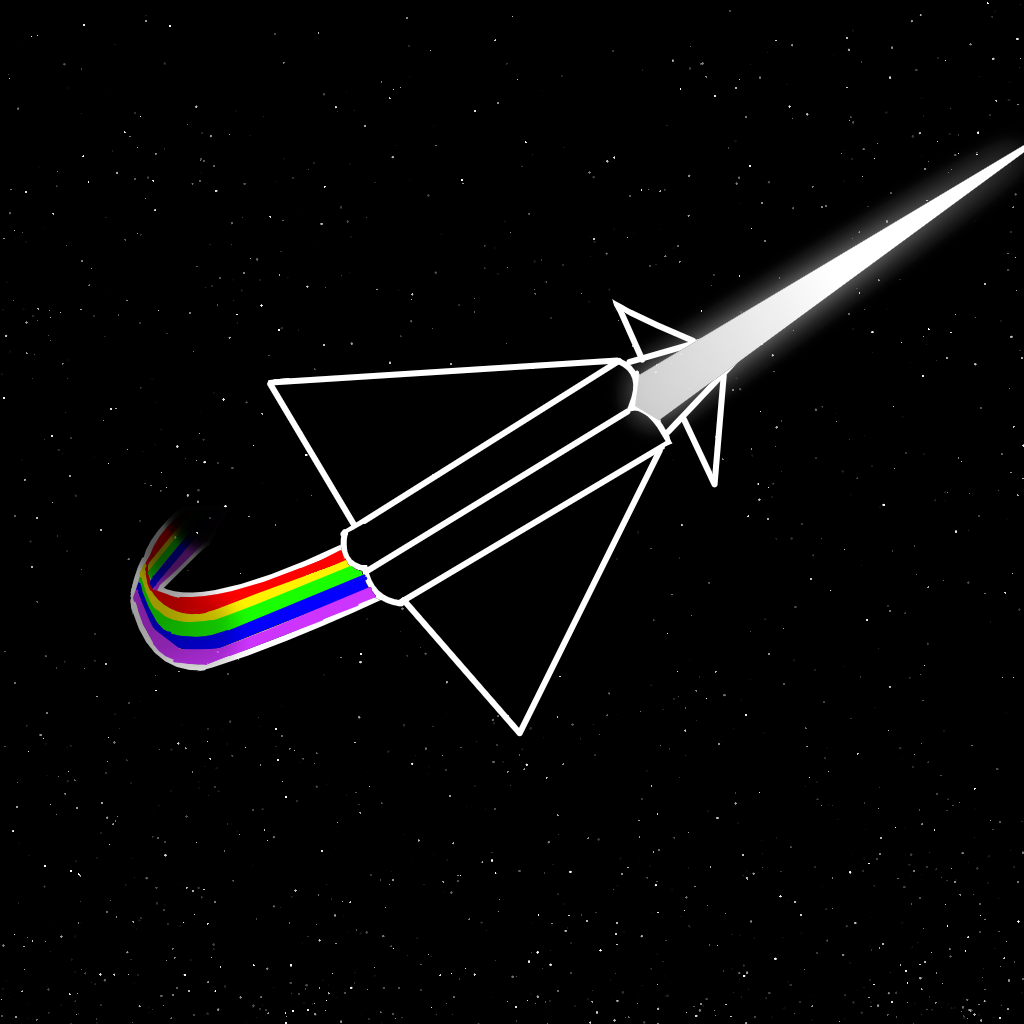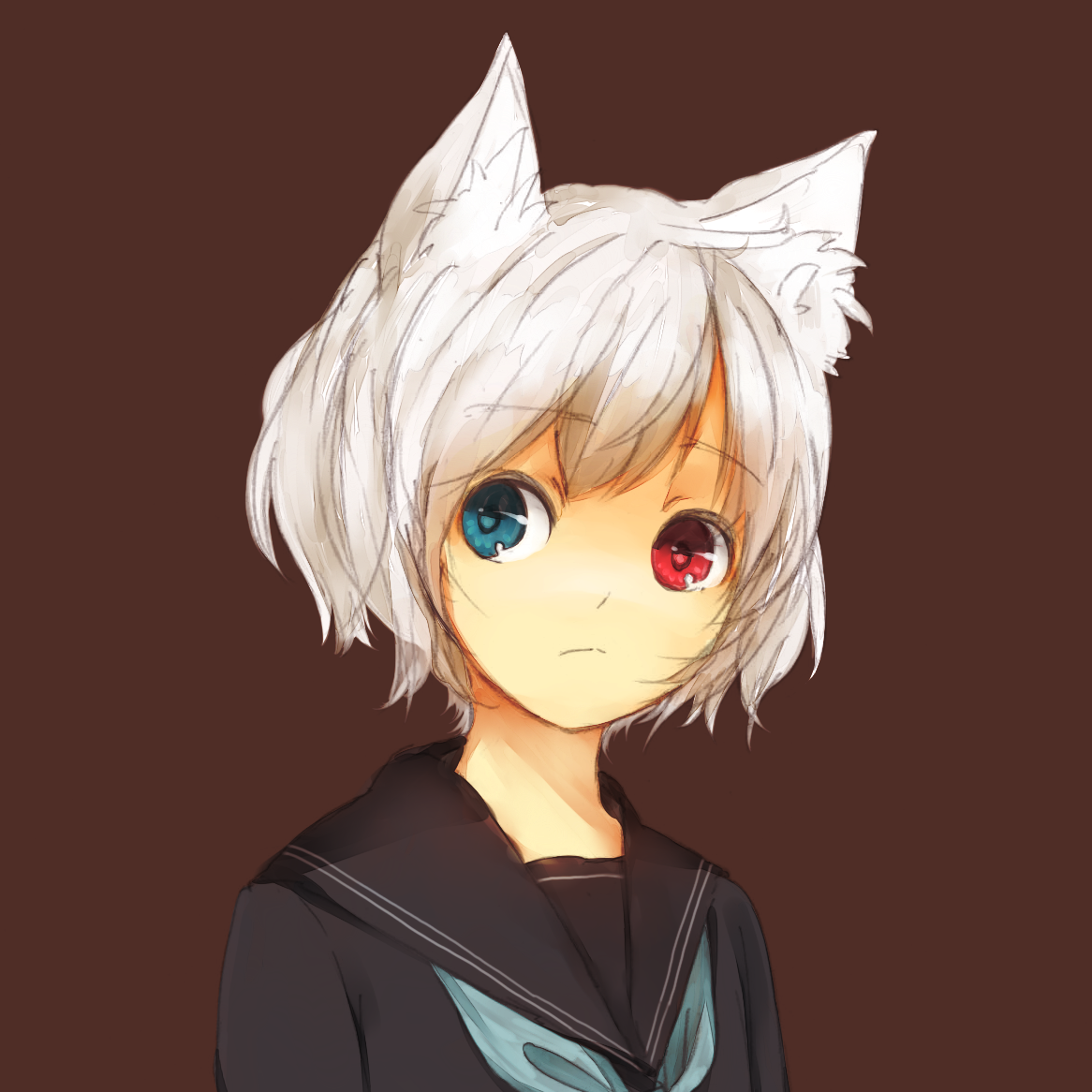Unirronically I agree with this. I still have yet to see a use case of ray tracing that makes it worth the 50% hit in fps.
A lot of the implications for ray tracing are on the dev-side of things. It’s a bit hard to explain without going into technical details.
Essentially, getting light to look “right” is very very hard. To do it, devs employ a lot of different techniques. One of those older techniques is baking the light on static objects, essentially pre-rendering where light goes and how it bounces. This has been done for a long time, e.g. even in Half-Life, the lights are baked for static geometry. So in a way, we have been using ray-tracing in games for a long time. however, it isn’t real time ray-tracing, as the information gets stored in light map textures, so there is no performance impact other than storing the texture in RAM/VRAM and drawing the texture together with others.
The inherit problem of that technique is that it only really works for static geometry. If you move your light or any objects in the scene, your lightmaps will no longer match. To solve this, there are mixed modes which use real-time lights, dynamic light maps, and other tricks. However, these are often subject to problems and/or the limitations of using real-time lights. Real-time light problems are: You can only do a limited number before getting a serious performance impact, especially if the lights produce shadows. Soft shadows, shadows in big areas, and very detailed shadows are extremely hard to do as well without some advanced tricks. Also, ambient occlusion and global illumination is not something you can just give lights (there is screen-space GI and AO, but they don’t look good in all circumstances, and you have limited control. There are also some other techniques some engines did for real time GI.).
Also there is the problem of baked light affecting dynamic objects, such as characters. This has been solved by baking so called “light probes”. These are invisible spheres that store the light data and the closest data then gets applied to the characters and other dynamic objects. This again has a some problem, as it’s hard to apply multiple light probes to the same object, so lighting might be off. Also, light direction is not accurate, which causes normal maps to look very flat in this light, and local shadows do not work using light probes. The same is done for reflections using reflection probes which are static. These are 360° “screen shots” essentially storing the reflection at that point in space. This however costs DiskSpace/RAM/VRAM, and it will not hold any information for moving objects (that’s why sometimes you can’t see yourself in the mirror in games). Also, the reflections sometimes look “out of place” or distorted when the reflection probe is too far from the reflecting surface (again, these cost VRAM and RAM so you don’t want to place them in front of every single reflective surface). It costs a lot of time to find the right balance. For the rest, usually screen space reflections are used, as any other real-time reflection is extremely costly as you essentially render the whole scene again for each local reflection. Screen space reflection is an advanced technique that works very well for stuff like reflective floors, but you will quickly see its downsides on very mirrored surfaces as it lacks information that is not on the screen. Some games like Hitman for example use the mix of those techniques extremely well.
Coming back to lighting, there are now better techniques used for example by unreal and some other engines (and now unity in experimental). The light gets stored in more predictable data structures, such as 3d textures. This way, you can store the direction of all light in each cell. The light then gets applied to the objects passing through those cells. This looks pretty good, and the runtime cost is fairly low, but the storage cost of such textures is a tradeoff of texture resolution and fidelity. These textures cost a lot of VRAM to store and without using advanced techniques and tricks, have their own limits (e.g. for scene size). It also costs a lot of time to create each time you change the scene, and it also doesn’t eliminate all problems mentioned above, like reflections, moving lights, etc.
Specifically, there is the problem of character lighting itself. Using light probes on characters usually looks pretty bad, as it removes a lot of detail of advanced skin shaders. Even with the above mentioned techniques, character lighting is still extremely hard to do. There is also some other problems, like ambient shadow in already shadowed areas, and light balancing for character versus scene lighting.
For that reason, most AAA games use separate light rigs for characters. Essentially floating lights that ONLY affect the character and move with them. When the mixing with the scene lights is done right, the rig adapts to the current situation in terms of light direction, color, and intensity. If you look in most AAA games, you can often see situations where rim-light comes from a direction where there is no actual light source. However, this way, the devs and artists have full control over lighting the characters. Essentially like a real movie production would have, but without the limitation of the real world.
Now, ray-tracing as you know it right now is not quite there yet, but eventually, ray tracing is the solution to a lot of the problems mentioned above. Things like polygon density, light count, global illumination, ambient occlusion, light direction, reflections, and much more are simply “there” for you to use. Now this doesn’t mean that it will automatically make everything look great, but with the overwhelming amount of different tricks that have to be used for current gen games to make the look good, it opens a whole new world of possibilities.
Also, something that will not directly influence the final game, it will eventually simplify things for devs so that more time can be invested into other things.
At this current usage of ray-tracing, it’s more like a gimmick, because devs will still focus most resources on the current ways to use light. This is because most people don’t have cards with sufficient ray-tracing capabilities. So for the moment, I agree that the performance hit is not worth it. However, eventually it might become the default way to draw games. While we are not quite there, in terms of performance, I think that things might become a lot more consistent and predictable eventually for raytracing.
YES, thank you! You saved me a lot of writing haha
This is spot on and the real advantage of ray tracing - when it becomes the norm it’ll look better, provide effects that are extremely difficult or impossible and do so with minimal dev pain.
Worth mentioning that we’re also about halfway on the average time for these big features to hit significant saturation, like with PhysX. It’s pretty common for a GPU (and sometimes CPU/Chip set) to take 3-4 generations to trickle down enough through new products and used product sales to have decent enough depth/usage. At this point depending on how Apple is handling ray tracing, they might slow down the transition away from rasterized.
Awesome and great explanation for a layperson. Because the industry has been faking lighting for so long and lighting is quite important, the industry has become incredibly good at it. But it also takes a lot of development time that could be spent on adding more content or features. There’s a reason the opinion about ray tracing is extremely positive within the game development industry. But also nobody’s expecting it to become the norm over night, and the period with hybrid support for both raytracing and legacy lighting is only just starting.
Remember PhysX back when it was a separate
card Physics Processing Unit before they shoved it on the GPU before they even had multithreading? Yea it evolved. But the original implementation was not ideal.Cyberpunk 2077’s RT Overdrive mode looks absolutely insanely good.
Can’t wait to play it on a graphics card I can afford in 20 years or so.
Me just quietly waiting for AMD to get competitive with ray tracing
Honestly all of the “it runs badly even on a 4090” stuff is talking about 4K with all the settings maxed - It runs at a solid minimum 30 for me at 1440p on my 3080 at nearly ultra settings. As long as you’re not expecting 60FPS at 4K, you can enable RT overdrive on affordable hardware.
Raytracing is good but the problem is that were are in a transitional period (and Nvidia keeps upselling it’s products)
I haven’t personally experienced a game that made use of it, so it must not exist
This u?
Yup, I have a 3090 and even then I don’t bother with RTX. It’s a gimmick Jensen and Nvidia love to push as a must have feature. In reality you don’t notice it if you’re playing a game normally, it’s a “stop and smell the roses” feature you only turn on to check out once and turn off immediately when you get frame dips.
How can you implement anything meaningful with ray tracing when shocker, not everyone can use ray tracing. Games are unfortunately designed for the median crowd. I would argue maybe the next console generation shall be that point when ray tracing is the norm. We have seen this fairly recently with SSDs, where they floated around for nearly 10-14 years in the consumer market being a cool piece of tech but most games were being designed for a hard disk except now most consoles have SSDs as the base standard, so this means the game can be designed around that specification and take advantage of it. Even though I am a PC stan, I understand consoles have a huge impact on the gaming industry.
That is why they came up with DLSS and then the frame generation. But of course it’s proprietary tech confined to the newest most expensive cards by Nvidia. Utterly useless
Are we going to ignore FSR and XESS probably wouldn’t have existed without this push? Like even if you don’t use Ray tracing I think its fair to say you can benefit from DLSS (even though one can argue its a cheap gimmick to raise your fps count) but having it as an option is a good thing.
Frame interpolation is still a weird one to me.
Like, with how the latency is obviously still tied to the base framerate, and the fact that lower framerates mean less information to calculate good interpolated frames from…
Basically, the tech is at its worst for low-end hardware that needs it the most. (Which is probably why they chose to restrict it to new models, now that I think about it)
A 4090 owner turning on DLSS3 is kinda like a dental surgeon getting a third car for their birthday.
Upscaling has come a long way though, and the anti-aliasing they use in DLSS is so good, they’ve released it as a standalone feature. That I can appreciate, anything is better than what some games do with TAA.
The problem with raytracing is that it’s real strengths are in places where traditional rendering doesn’t work at all. As soon as raytraced games stop needing a rasterized option, raytracing will really become useful. Most of it’s advantages are around dynamic scenes where you can’t just bake the lighting, or reflections which without raytracing will break if you look at them slightly wrong.
Edit: Most of the minecraft raytracing implementations are lacking in my opinion, but minecraft is a game that is well suited for raytracing. Really just anything with a dynamic world.
Spider-Man 2 has launched with ray tracing always on and looks and plays phenomenally. Super immersive to swing around the city and have proper reflections off all the skyscrapers!
Ray Traced particles are pretty cool in Returnal and Control.
Getting the vibe that OP is being serious while using a template supposed to be ironic.
Seems odd to be angry about game graphics progressing. Imagine how it was during the 90s.
You may not like it, but Lara Croft pyramid boobs is peak graphics
“Pyramid” boobs and “peak” graphics.
I like what you did there ;)
This comment is right (and left) on point.
I don’t think so, it’s clearly an ironically hyperbolic statement
I don’t know man, some people unironically thinks the earth is flat, that if a supernova happened in our galaxy the earth would blow up or that Volkswagen is pronounced with an English v and not with f despite listening to a German explain the German v. You can never tell when it comes to internet strangers.
Most of the comments (at least when I opened the post) were talking about RT as if it all does is ruining performance and shouldn’t be used.
This, but unironically. Games don’t even need such realistic graphics, anyway - I’d much rather play a stylized or even 2d game where the devs focused on mechanics and fun, rather than pretty lights.
Minecraft, ULTRAKILL, Undertale, Celeste
all of them some of the best games in my opinion, how many use ray tracing? ZERO.
Hollow Knight, Crosscode, Hades, Dead Cells, Signalis, Dusk, Outer Wilds, Underrail, and more are all great examples of relatively modern games that kill it in the graphical department without using anything fancy.
Edit, because this is fun: Boltgun, Sea of Stars, the Bloodborne PS1 demake, Tunic, and more.
deleted by creator
i was talking about unmodded java edition.
Minecraft shaders look great though, especially the rtx one for bedrock. If it was more open source, I’m sure ray tracing would be great to implement into shaders.
i was talking about unmodded java edition
Celeste still has really nice lighting in places, imo, but you are right, it all just comes from good colour choice and artistic skill, not some premade graphics option that they flipped on.
fuck graphics all games should be text-based from now on
$ crawlZork was the shit.
Text-based minecraft
Right, but then someone will rebuild Minecraft in text-based Minecraft with a 3D rendering engine displayed through ASCII
Sounds doable. Something like 192x108 characters should work great on software rasterizer. For heavy loads you can use paletted mode of GPU.
Garbage take. Few things are truly needed outside of the game being enjoyable and “good” graphics can absolutely be something contributing to that. For some good is pixel graphics, for others it’s near realism. You don’t get to decide for anyone but you.
Spoken like a true garbage eating normie
Yup. Currently I’m on the indie hype train, but games like The Witcher and Red Dead are also very fun and benefit from good graphics.
Half of the shit that is praised today are basically subpar rendered movies with little gameplay elements.
Might aswell play a visual novel and atleast get a good story instead.
Don’t worry bro just turn on fake frames and upscaling. Now we get shitty graphics AND raytracing at the same time!
The weird hybrid solutions that game devs are coming up with to beat out the old tech without doing full RTX is awesome. And for that reason I like RTX, because its pushing development of ideas that work better for today’s hardware and today’s applications.
Raytracing is genuinely cool as hell, but Nvidia needs to stop being a dumb cunt about it
Nvidia is succeeding (in business) by being cunts, In don’t know if they will ever not be cunts. 😂
But you can still buy freesync and g sync monitors, however it seems freesync won that battle. It’ll be a matter of time.
Don’t even get me started on adaptive sync. New Gsync monitors are finally capable to run VRR with AMD gpus now. Why do they bother still making them, then?
After playing Portal RTX and Quake 2 RTX, my opinion is that what we really need are games that fully embrace RTX as their rendering. Lower poly count, use materials more, lean in onto the cool lighting.
Games like Cyberpunk 2077 use RTX, but it’s just painted over so it is very expensive for what it brings to the table. Sure it’s more accurate and having reflections is neat, but it costs more than some shadow maps and doesn’t beat good artistic design.
Yea were still in that transition period. One of the other problems is having RTX requirements only. Eventually the GTX cards will have to die out in order for this to be achieved though.
Yeah, we will only start seeing games that fully rely on raytracing when low-mid tier GPUs will be able to support at least current day RTX 3070 performance. As in, you can do better but at least you can run stuff fully in raytracing.
RTX in Spider-Man/Miles Morales on PC was… Amazing.
Being able to see yourself swinging by windows in realtime, shadows from buildings…
It was worth the FPS hit.
You know, that’s fair. Most of my experience with RTX in games so far been in first person shooters and they’re kind of lacking in environments like those.
Mostly stuff like slightly better lighting in Cyberpunk or the flickery caustics in recent Robocop game. Bonus points for the games that implement RTX reflections and shadows but don’t have your character reflect or cast a shadow.
Raytracing produces realistic visual effects without requiring tricks like ambient occlusion, screen-space reflections, shadow resolution and so on, since those emerge as a result of raytracing anyway and are much more realistic. I’m currently rendering a Donut in Blender where the effects are clearly visible in comparison.
However, due to the high amount of optimization in visually impressive realtime rendering engines like game engines, I agree with you that I don’t see many benefits comparing ray tracing in games with contemporary alternative techniques.
Nevertheless I think that’s the future. In the long run, there’s nothing better, i.e. more accurate, than simulating the behavior of light when it comes to visual realism.
Also, baked lighting has another cost - nothing that is baked can be dynamic, and it has to be done during development, so it takes up dev resources.
Raytraced stuff happens immediately without tricks. All you need is the geometry and the materials to be accurate, and it should look right, no questions asked.
Once we get to a point where raytracing can be assumed even for low end systems, the problem where systems can’t run certain games could become a thing of the past. I mean, if manufacturers weren’t constantly bombarding us with planned & perceived obsolescence.
in the case where you have vehicles with explorable interiors (like the ships in Star Citizen), lighting has to be dynamic because lighting conditions change just as a result of flying around normally. The position of the sun in whichever of the two (current) star systems you’re in relative to your ship, and the atmosphere which may or may not be present outside, the position of cargo and objects/materials that will be receiving light and causing it to diffuse onto surrounding surfaces in a cabin also requires at least some kind of reference or it just feels BAD.
But the recent citizencon engine presentation showed some AMAZING new short cuts that give just enough visual fidelity without tanking the framerate that it scratches some kind of itch DEEP within the predictive modeling of the human mind… when light acts more like it’s supposed to, it’s fucking magical.
Eh, pathtracing is pretty cool, and when used correctly, it can lead to real amazing results, while the artist does not have to care about performance as much. Baked lighting is very nice for static scenes, but it also consumes a lot of storage.
Godot’s SDFGI seems like a good tradeoff, particularly as it works well on not-super-new GPUs (Juan: “but you can run them great on something old, like an gtx960 or a rx450 and get pretty real-time lighting at 1080”).
Sdfgi is pretty cool, (I develope with Godot), but for now it’s still really hard to figure out the right settings for it to not be a gigant splat fest… Cuz it leaves splats of color all around the place. Outside scenes work a lot better though, so that’s cool.
It’s not really that dynamic yet though, but I looked at their presentation where they talked about future features and they said that support for dynamic objects will be coming. I’m pretty excited about where its going.
They originally planned to get the improvements out in 4.1 but it looks like they haven’t gotten around to it yet. https://github.com/orgs/godotengine/projects/33/views/1?pane=issue&itemId=12571576
cyberpunk has a path tracing setting and it gives me even worse performance than ray tracing 😭
that’s because it’s more intensive than Ray Tracing.
hello I would like to run my games at 1 quarter framerate please
True, it does tank performance a lot. For that though, you are getting actual realistic lighting, which makes certain scenes look like absolute garbage, since these scenes were designed with the “fake lighting” in mind.
I’m surprised they didn’t go with the fact that ray tracing shoots rays out of the camera rather than having light radiate from light sources.
“That’s a scientifically outdated view of how light works! Light enters your eyes, not the other way around! What is this? Emission theory? Are we back in the 1600s? They’ve played us for absolute fools.”
That’s clever. Only trace the rays that the camera can see and probably cheaper to send some rays from the camera to the sun than vice versa.
Exactly ! this makes the problem potentially millions of times easier, since you know with certainty that every ray fired is going to contribute to the image, whereas firing rays from the light source would guarantee you never see most of them, the processing power is wasted and your image never converges
Counterpoint: I like pretty lights and don’t mind having to play at a suboptimal framerate if it means more detail that I’m going to notice and enjoy.
Also, I keep seeing people confusing photorealism with a lack of style, when that’s just not true. Pixar movies for example are photorealistic but stylized. You can have fancy lights and cool styles.
I disagree that pixar movies are photorealistic… They’re pretty solidly on the cartoon side of things
Pixar movies have accurate lighting which makes them look great. Lighting separates a good looking game from a great looking game and is more important than textures imo.
Main point aside, that isn’t photorealism tho. Photorealism is depicting something almost identical to a real life photograph or simply what most consider realistic graphics.
I would consider photorealism to mainly be light-based (prefix photo meaning light), but I get what you mean. I’d consider photorealism and realism to be separate. “I can see that existing” vs “I can see myself being there”
A better example probably would’ve been claymation, or pokemon concierge.
Edit: my definition of photorealism might be off.
Yeah I got your point but pretty sure photo in photorealism is just photograph. Not sure if there are any term like that for realistic lighting tho.
Counterargument: my 3090 is my space heater
This, I can’t run my pc in the summer, makes the room far too hot
Ray Tracing is awesome
Yeah I met Ray back at a comiccon in '99. Really down to earth but very bright guy. No room for any disrespect, and his wife Judy is a gem too.
Counter, or maybe side, argument; the problem is that nobody has actually done it well. There is a very real difference to be made using real time pathtracing, but everyone is distracted by pretty lights.
counter counter or maybe side side argument, teardown had voxel destruction with ray tracing i think.
maybe not, the wikipedia article is a bit vague on it.
it says they were initially implemented with raytracing, but idk if that means the final game utilizes raytracing.
neat game though.
Is it a bit vague?
Ultimately, ray tracing was used for most graphics elements, allowing for more realistic lighting.
[Reviewers cited] its use of ray tracing
Source article: “Ray tracing is so crucial to Teardown that the world goes black if you turn it off”
I think it’s pretty clear, tbh.
ah yeah there ya go, twas used for lighting, which we were trying to find an example of other stuff.
oh well.
Just a side note: simulating light in a 3D environment is the stuff you could use to write a fucking phd, no joke. And another if you can figure a way to make the algorithm faster
Am I the only one who thinks that Ray Tracing doesn’t even look good?
My brother and I upgraded our computers recently. I went with bang for buck and got a 6600XT, he wanted the RT experience and got a 4070TI. Playing cyberpunk on his computer was disappointing tbh. I expected more from almost a 400% more expensive setup.
Apparently 90% of people can’t even tell so…
Just tells you how many tricks have been developed to make rasterization look as good as it does. Fascinating, really. It’s always interesting to see how people work around a limitation.
The thing with real-time raytracing and pathtracing is that instead of being a workaround, it removes the limitation entirely, which is damn cool.
Just need faster hardware still, which will take at least another decade with how Nvidia keeps milking the smallest improvements gen after gen.
This tracks with every other graphic option if the person doesn’t know exactly what they’re looking for, in my experience. Most options don’t have such a huge impact, and are more just “yeah, that feels a bit better, I guess” once you get past the basic, obvious stuff like resolution.


























